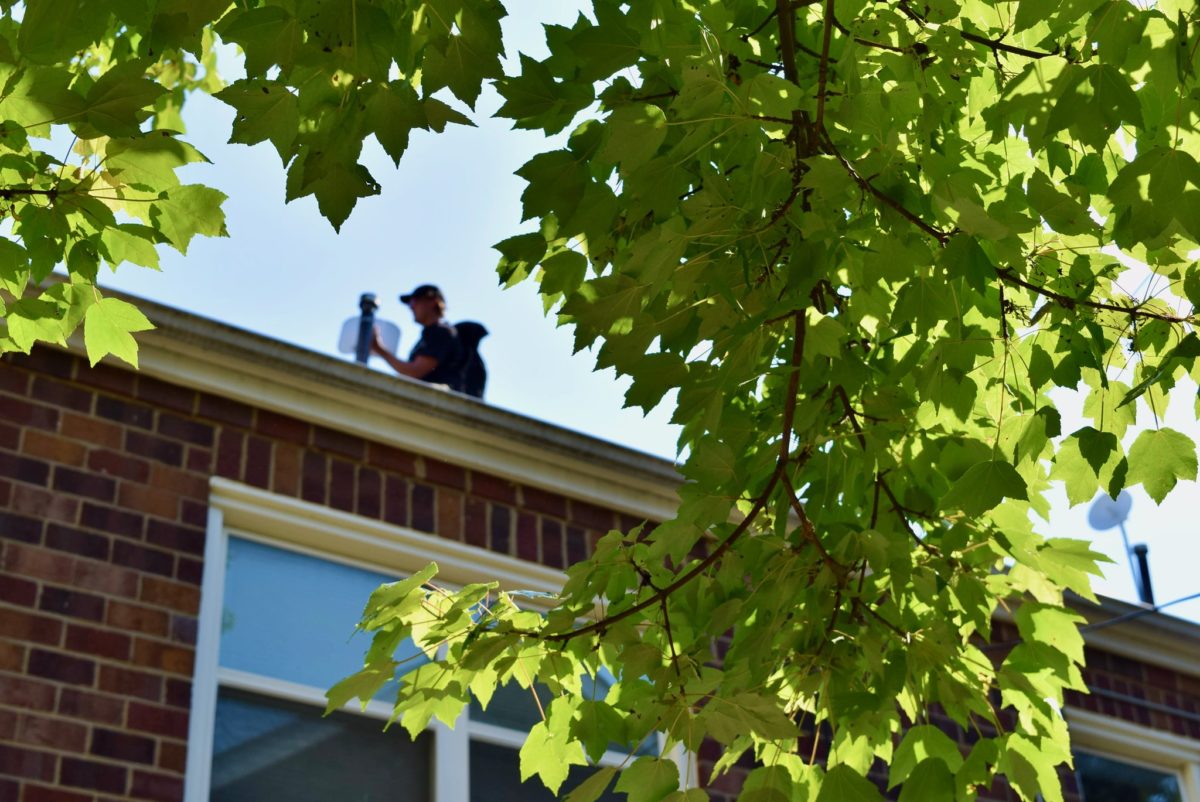Project Waves spent 2020 providing free internet to over 120 families in Baltimore city, and has received funding from the National Science Foundation to provide free internet service to 250 more families.
Its work has grown in a city where 40% of residents don’t have wireline internet access, according to an Abell Foundation report released this year. That’s 96,000 Baltimore households that didn’t have access when school and work went remote in the pandemic.
Among them was the home of 60-year-old Jay Bennet, where he lives with three children. Before getting connected when Project Waves set up internet in his Lakeland neighborhood of Southwest Baltimore, he had gone a year without internet service.
“Project Waves is a life saver,” said Bennet. If he didn’t have internet access, he said, “It’d be real ugly. The kids wouldn’t even be in school right now. I can’t afford cable right now. Without [Project Waves], it would be a disaster.”
In partnership with National Science Foundation and UMBC professor Foad Hamidi, Project Waves’ expansion work includes a study that follows what happens when residents gain internet access, and how it changes opportunities. For Bennet, Project Waves took a real weight off his shoulders. When the pandemic started, and school went virtual he didn’t know how he was going to provide internet for his family.
Bennet learned about Project Waves from its pilot program with Baltimore City Public Schools, which allowed homes in the vicinity of schools like Lakeland Elementary-Middle School to be connected. Asked about his plan to get internet access before that, he said, “I don’t know. I had to figure that one out when I got to it.” Once he learned of the service, it was “a one, two, three,” he said.
After connecting with Project Waves, a satellite dish was put on his home that connects to sector antennas on a building in his neighborhood, and he had internet for the household.
“I went from sad to happy, real quick,” he said.

Founded in 2018 by engineer Adam Bouhmad, Project Waves sets up community-based mesh networks. Sector antennas sit on tall buildings throughout the city, like the Exelon building in Harbor Point and the University of Maryland BioPark in Southwest Baltimore, that broadcast internet to surrounding communities. The community owns the equipment and network, so there is no bill due at the end of every month.
There are four people in Bennet’s household, including himself. That includes two children in public school and another young adult using the internet for college. Bennet is also using internet for his own needs. He says they can all be on at once with no problems.
It indicates a full household of four can use high speed internet for school, work and leisure with Project Waves. That level of capacity is in dispute when it comes to a widely-used low-cost broadband option in the city, Comcast’s Internet Essentials package. At a hearing earlier this year, student-run organization SOMOS and city councilmembers relaying constituent stories said parents must choose between work, online school for kids and even which kid gets to attend online schooling because of issues with upload and download speeds of that service.
But when it comes to Project Waves, Bennet is satisfied.
“It’s a blessing for people that’s underprivileged,” he said. “It’s a blessing for people that just need to be able to function with internet in their day-to-day life.”







